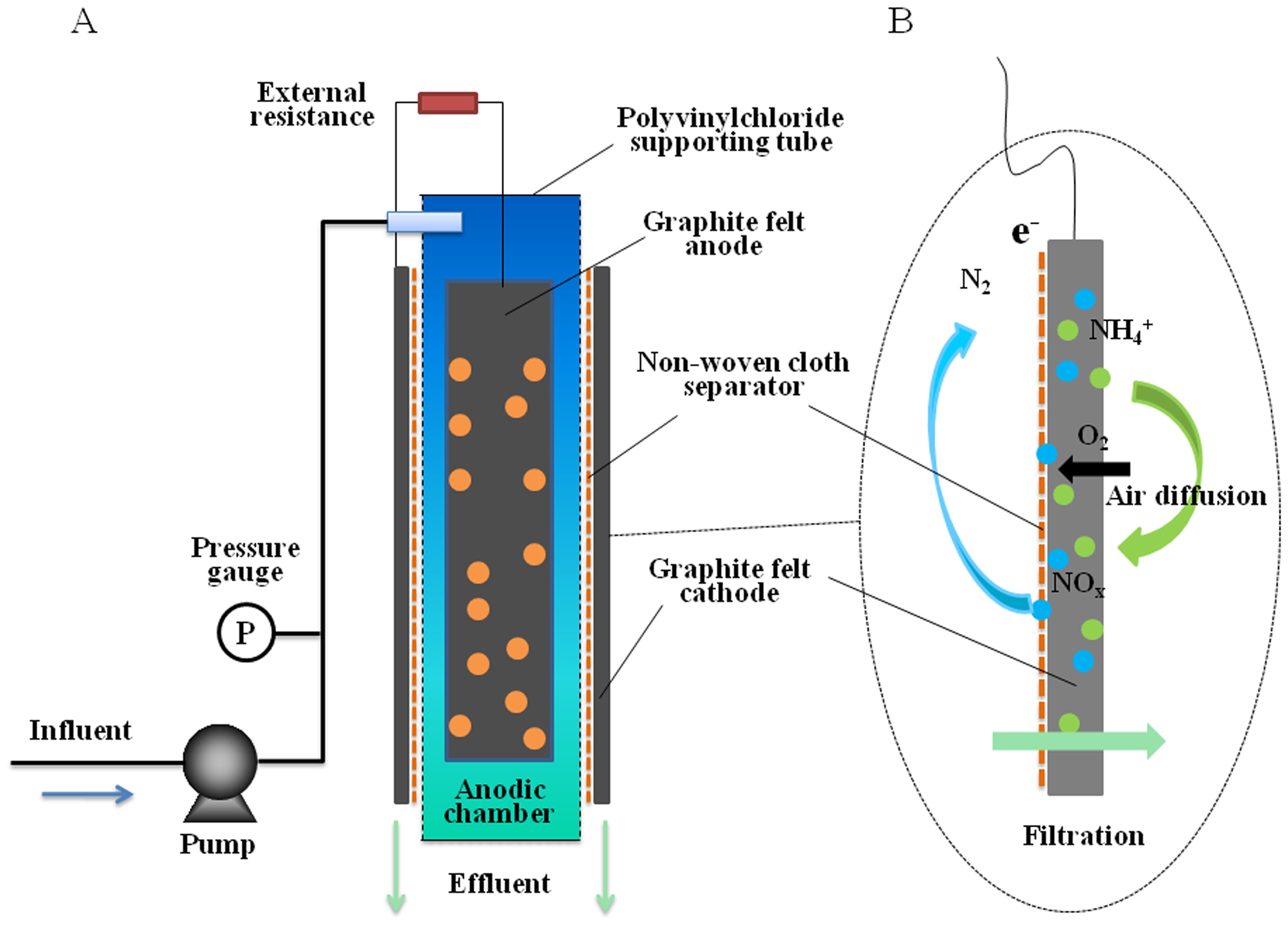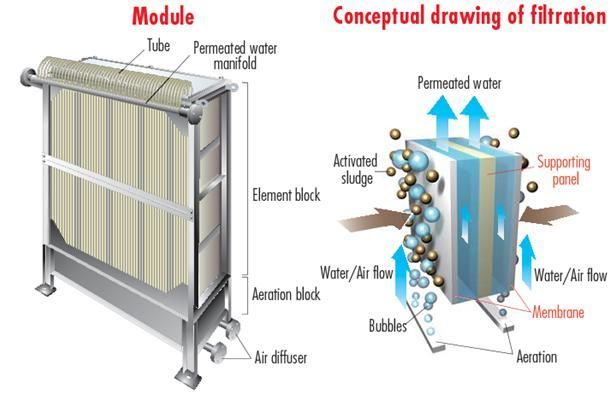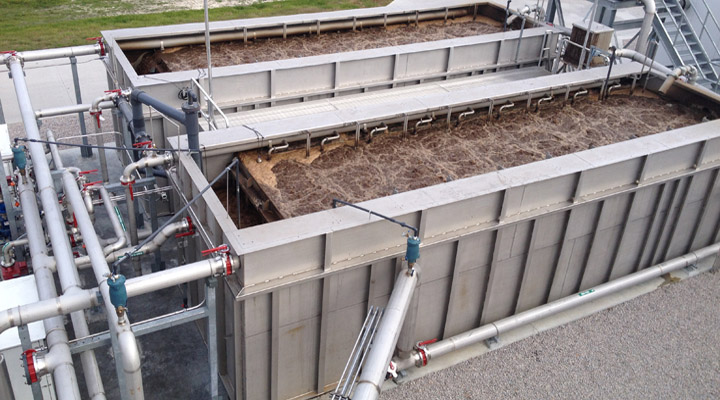The Science Behind Membrane Bioreactor: How It Works and Why It’s Effective
The Science Behind Membrane Bioreactor: How It Works and Why It’s Effective
Blog Article
Membrane Bioreactors Described: Effective Solutions for Clean Water
Membrane bioreactors (MBRs) have actually arised as an advanced solution for addressing the pressing obstacles of wastewater treatment - Membrane Bioreactor. By integrating organic processes with sophisticated membrane layer filtering, MBRs not just boost the high quality of treated water but likewise decrease the spatial needs of therapy facilities.

What Are Membrane Layer Bioreactors?
Membrane bioreactors (MBRs) are advanced wastewater therapy systems that integrate biological degradation processes with membrane filtering technology. This integration permits the efficient elimination of pollutants from water, making MBRs a recommended choice in various applications, including municipal wastewater treatment and commercial effluent administration.

One of the essential advantages of MBRs is their capacity to generate high-quality effluent, usually appropriate for reuse in watering or industrial procedures. Additionally, MBRs require a smaller sized footprint contrasted to standard treatment systems, making them suitable for urban settings where space may be limited.
Additionally, MBRs can successfully handle differing influent lots and are much less vulnerable to the effects of toxic shocks. These qualities add to their growing popularity as a lasting option for addressing the enhancing need for tidy water while reducing environmental impacts.
How Membrane Layer Bioreactors Job
While the procedure of membrane layer bioreactors (MBRs) might appear facility, it essentially revolves around the harmony in between biological processes and membrane layer filtering. MBRs incorporate a biological treatment procedure, typically triggered sludge, with a membrane separation device to deal with wastewater efficiently.
In an MBR system, wastewater is first introduced right into a bioreactor where microorganisms deteriorate organic issue and other pollutants. The biological activity lowers the concentration of pollutants while advertising the growth of biomass. Following this biological treatment, the mixed liquor is subjected to membrane layer filtering, which can be microfiltration or ultrafiltration, depending on the preferred effluent top quality.
The membrane layers function as a physical barrier, allowing water and small solutes to pass while keeping put on hold solids and bigger molecules. This enables the system to maintain a high concentration of biomass within the activator, enhancing the therapy effectiveness.
In addition, the constant splitting up of cured water from the biomass facilitates a portable style and decreases the footprint of the treatment center. On the whole, the mix of biological degradation and membrane layer filtration in MBRs causes effective and trusted wastewater therapy, making sure top quality effluent ideal for various applications.
Advantages of MBR Innovation
Among the essential advantages of membrane layer bioreactor (MBR) innovation is its ability to produce high-quality effluent with a dramatically reduced footprint compared to conventional wastewater treatment techniques. MBR systems successfully incorporate biological treatment and membrane layer filtering, leading to exceptional elimination of impurities, consisting of suspended solids, virus, and raw material. This ability results in effluent that frequently meets or goes beyond rigid regulative criteria for reuse and discharge.
Additionally, MBR technology enables for higher biomass concentrations, which enhances the treatment performance and decreases the called for reactor volume. This small design is particularly beneficial in urban areas where room is limited. The functional adaptability of MBR systems additionally suggests they can adapt to varying influent qualities and circulation prices, making them ideal for a large array of applications.
Additionally, the lowered sludge production linked with MBR processes contributes to lower functional and upkeep expenses. The membrane layers act as a physical obstacle, minimizing the threat of obstructing and enabling longer functional periods between cleansing. Overall, the benefits of MBR technology make it an eye-catching service for lasting wastewater treatment, attending to both ecological problems and the requirement for reliable source management.
Applications of Membrane Layer Bioreactors
With their convenience and effectiveness, membrane bioreactors (MBRs) locate applications across different industries, consisting of community wastewater therapy, industrial procedures, and also water reclamation. In local setups, MBRs offer a small remedy for dealing with wastewater, properly eliminating pollutants while concurrently generating premium effluent that satisfies rigorous governing standards. This makes them particularly his explanation appropriate for areas with limited room.
In industrial applications, MBR innovation is utilized for dealing with procedure water, particularly in sectors such as food and drink, pharmaceuticals, and petrochemicals. These industries profit from MBRs' ability to handle high organic lots and their effectiveness in recovering valuable sources from wastewater, such as nutrients and water.
In addition, MBRs play an important role in water improvement campaigns, enabling the reuse of treated wastewater for irrigation, industrial processes, or also as drinkable water after further therapy (Membrane Bioreactor). Their performance in removing toxins and pathogens makes them a trustworthy selection for guaranteeing water top quality in different reuse applications
Future of Water Treatment Solutions
The future of water therapy options is positioned for transformative improvements driven by technological development and increasing environmental understanding. As international water deficiency ends up being a pushing problem, new techniques, including membrane bioreactor (MBR) systems, are readied to play a pivotal function in boosting the performance and sustainability of water therapy processes.
Arising technologies such as man-made knowledge and equipment discovering are expected to optimize treatment operations, enabling real-time surveillance and anticipating upkeep. This will boost the general dependability and performance of water therapy facilities. Furthermore, improvements in membrane products, such as graphene and nanofiltration, promise to increase permeation prices and decrease fouling, resulting in lower power intake and functional expenses.
Furthermore, the assimilation of renewable resource sources right into water treatment plants will contribute to greener methods. The round economic climate version will certainly additionally get grip, encouraging the recovery of important sources from wastewater, such as nutrients and energy.
Verdict

Membrane layer useful link bioreactors (MBRs) have emerged as an innovative service for dealing with the pushing difficulties of wastewater therapy. By integrating biological procedures with innovative membrane filtering, MBRs not view only boost the quality of treated water but additionally decrease the spatial needs of therapy facilities.One of the essential advantages of membrane bioreactor (MBR) modern technology is its capacity to produce high-quality effluent with a dramatically decreased impact contrasted to standard wastewater treatment techniques.With their flexibility and effectiveness, membrane layer bioreactors (MBRs) locate applications throughout numerous fields, including municipal wastewater treatment, industrial processes, and also water improvement.In final thought, membrane layer bioreactors stand for a significant development in wastewater treatment technology, incorporating organic procedures with effective membrane purification to produce top notch effluent.
Report this page